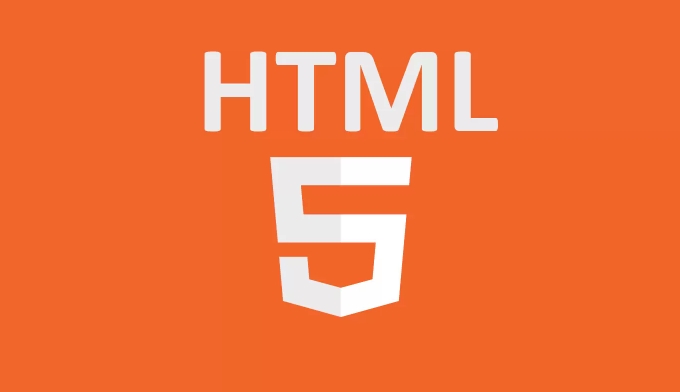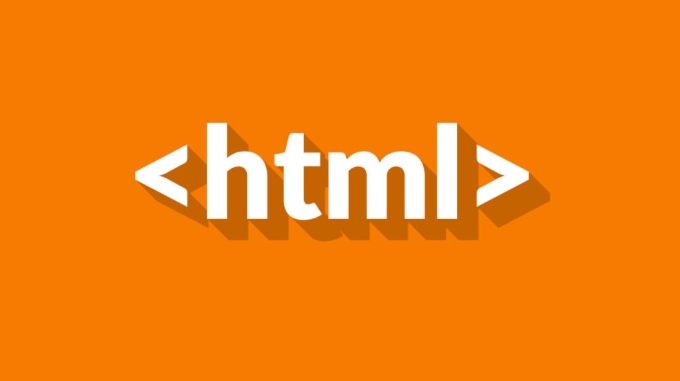Nomodule is a boolean property of the <script> tag, used to be compatible with old browsers that do not support ES Modules. Its function is: the browser that supports module ignores scripts with nomodule, and loads it if it is not supported. This provides different code paths for different browsers. For example: <script type="module" src="modern.js"></script>. The actual usage scenarios include modular development and fallback packaged versions, lazy loading of polyfills. Note when using it: if you do not need to be compatible with old browsers, you do not need to use it, ensure that fallback code is compatible, test fallback validity, and avoid script conflicts.

In modern web development, the nomodule property of the <script></script> tag is actually a very practical but easily overlooked feature. It is not used to "disable" modules, but to be compatible with old browsers that do not support JavaScript modules ( type="module" ).

Simply put: if you use ES Modules and want old browsers to run code, nomodule comes in handy .
What is nomodule ?
nomodule is a boolean property of the <script></script> tag. When the browser sees this property:

- If it supports modules (that is,
type="module"), scripts withnomodulewill be ignored . - If it does not support modules , the script will be loaded and executed.
This means that you can provide different code paths for modern and old browsers respectively.
For example:

<script type="module" src="modern.js"></script> <script nomodule src="fallback.js"></script>
In the above code:
- The browser that supports modules will load
modern.jsand skipfallback.js - Browsers that do not support modules will load
fallback.js, skipmodern.js
This is very useful for gradual enhancement.
Why do you need nomodule ?
Although most mainstream browsers now support ES Modules, some old devices or company intranets may still use IE or older versions of Safari. These environments do not recognize type="module" , so you cannot directly load modular JS to them.
If you do not process it, just send modular code to these browsers, and the result will be that JS errors and function failures.
At this time, nomodule provides a clean way for you:
- Send lighter and more standard module code to new browsers
- Send packaged compatibility code to old browsers (such as bundle built through Babel Webpack)
This will not only enjoy the advantages of modern features without losing compatibility.
Actual use scenarios
Scenario 1: Modular development rollback packaged version
This is the most common usage. You use a modular structure during the development stage and output two versions when building:
- A modern version for a browser that supports modules
- A packaged traditional version for old browsers
Then the HTML is written as follows:
<script type="module" src="/assets/main.js"></script> <script nomodule src="/assets/legacy-bundle.js"></script>
Scene 2: Lazy loading polyfill
You can also use nomodule to automatically introduce polyfill, such as:
<script type="module"> // Here is modern code</script> <script nomodule src="https://polyfill.io/v3/polyfill.min.js"></script>
In this way, only browsers that do not support modules will load polyfills to reduce unnecessary requests.
Notes on using
- Don't abuse
nomodule: If you don't need to be compatible with old browsers, there is no need to use it. - Make sure the fallback script is indeed compatible with the old environment : for example, do not use the
importsyntax inside. - Testing is important : Test whether fallback works properly in a real old device or browser emulator.
- Avoid conflicts caused by loading multiple scripts at the same time : For example, both scripts have the same variable name defined, which may cause problems.
Overall, nomodule is a simple but smart design that helps us find a balance between modern development and backward compatibility. Although not used every day, it can really solve the problem when needed.
Basically that's it.
The above is the detailed content of The `nomodule` Attribute for JavaScript Modules. For more information, please follow other related articles on the PHP Chinese website!

Hot AI Tools

Undress AI Tool
Undress images for free

Undresser.AI Undress
AI-powered app for creating realistic nude photos

AI Clothes Remover
Online AI tool for removing clothes from photos.

Clothoff.io
AI clothes remover

Video Face Swap
Swap faces in any video effortlessly with our completely free AI face swap tool!

Hot Article

Hot Tools

Notepad++7.3.1
Easy-to-use and free code editor

SublimeText3 Chinese version
Chinese version, very easy to use

Zend Studio 13.0.1
Powerful PHP integrated development environment

Dreamweaver CS6
Visual web development tools

SublimeText3 Mac version
God-level code editing software (SublimeText3)
 Applying Semantic Structure with article, section, and aside in HTML
Jul 05, 2025 am 02:03 AM
Applying Semantic Structure with article, section, and aside in HTML
Jul 05, 2025 am 02:03 AM
The rational use of semantic tags in HTML can improve page structure clarity, accessibility and SEO effects. 1. Used for independent content blocks, such as blog posts or comments, it must be self-contained; 2. Used for classification related content, usually including titles, and is suitable for different modules of the page; 3. Used for auxiliary information related to the main content but not core, such as sidebar recommendations or author profiles. In actual development, labels should be combined and other, avoid excessive nesting, keep the structure simple, and verify the rationality of the structure through developer tools.
 How to group options within a select dropdown using html?
Jul 04, 2025 am 03:16 AM
How to group options within a select dropdown using html?
Jul 04, 2025 am 03:16 AM
Use tags in HTML to group options in the drop-down menu. The specific method is to wrap a group of elements and define the group name through the label attribute, such as: 1. Contains options such as apples, bananas, oranges, etc.; 2. Contains options such as carrots, broccoli, etc.; 3. Each is an independent group, and the options within the group are automatically indented. Notes include: ① No nesting is supported; ② The entire group can be disabled through the disabled attribute; ③ The style is restricted and needs to be beautified in combination with CSS or third-party libraries; plug-ins such as Select2 can be used to enhance functions.
 Implementing Clickable Buttons Using the HTML button Element
Jul 07, 2025 am 02:31 AM
Implementing Clickable Buttons Using the HTML button Element
Jul 07, 2025 am 02:31 AM
To use HTML button elements to achieve clickable buttons, you must first master its basic usage and common precautions. 1. Create buttons with tags and define behaviors through type attributes (such as button, submit, reset), which is submitted by default; 2. Add interactive functions through JavaScript, which can be written inline or bind event listeners through ID to improve maintenance; 3. Use CSS to customize styles, including background color, border, rounded corners and hover/active status effects to enhance user experience; 4. Pay attention to common problems: make sure that the disabled attribute is not enabled, JS events are correctly bound, layout occlusion, and use the help of developer tools to troubleshoot exceptions. Master this
 Configuring Document Metadata Within the HTML head Element
Jul 09, 2025 am 02:30 AM
Configuring Document Metadata Within the HTML head Element
Jul 09, 2025 am 02:30 AM
Metadata in HTMLhead is crucial for SEO, social sharing, and browser behavior. 1. Set the page title and description, use and keep it concise and unique; 2. Add OpenGraph and Twitter card information to optimize social sharing effects, pay attention to the image size and use debugging tools to test; 3. Define the character set and viewport settings to ensure multi-language support is adapted to the mobile terminal; 4. Optional tags such as author copyright, robots control and canonical prevent duplicate content should also be configured reasonably.
 Best HTML tutorial for beginners in 2025
Jul 08, 2025 am 12:25 AM
Best HTML tutorial for beginners in 2025
Jul 08, 2025 am 12:25 AM
TolearnHTMLin2025,chooseatutorialthatbalanceshands-onpracticewithmodernstandardsandintegratesCSSandJavaScriptbasics.1.Prioritizehands-onlearningwithstep-by-stepprojectslikebuildingapersonalprofileorbloglayout.2.EnsureitcoversmodernHTMLelementssuchas,
 How to associate captions with images or media using the html figure and figcaption elements?
Jul 07, 2025 am 02:30 AM
How to associate captions with images or media using the html figure and figcaption elements?
Jul 07, 2025 am 02:30 AM
Using HTML sums allows for intuitive and semantic clarity to add caption text to images or media. 1. Used to wrap independent media content, such as pictures, videos or code blocks; 2. It is placed as its explanatory text, and can be located above or below the media; 3. They not only improve the clarity of the page structure, but also enhance accessibility and SEO effect; 4. When using it, you should pay attention to avoid abuse, and apply to content that needs to be emphasized and accompanied by description, rather than ordinary decorative pictures; 5. The alt attribute that cannot be ignored, which is different from figcaption; 6. The figcaption is flexible and can be placed at the top or bottom of the figure as needed. Using these two tags correctly helps to build semantic and easy to understand web content.
 How to embed content from another site using the html iframe tag?
Jul 04, 2025 am 03:17 AM
How to embed content from another site using the html iframe tag?
Jul 04, 2025 am 03:17 AM
Use tags to embed other website content into your own web page. The basic syntax is:, you can add width, height, and style="border:none;" to control the appearance; in order to achieve responsive layout, you can set the size through percentage or use containers to combine padding and absolute positioning to maintain the aspect ratio, while paying attention to cross-domain restrictions, loading performance, SEO impact, and security policies. Common uses include embedding maps, third-party forms, social media content and internal system integration.
 HTML for email templates tutorial
Jul 10, 2025 pm 02:01 PM
HTML for email templates tutorial
Jul 10, 2025 pm 02:01 PM
How to make HTML mail templates with good compatibility? First, you need to build a structure with tables to avoid using div flex or grid layout; secondly, all styles must be inlined and cannot rely on external CSS; then the picture should be added with alt description and use a public URL, and the buttons should be simulated with a table or td with background color; finally, you must test and adjust the details on multiple clients.






